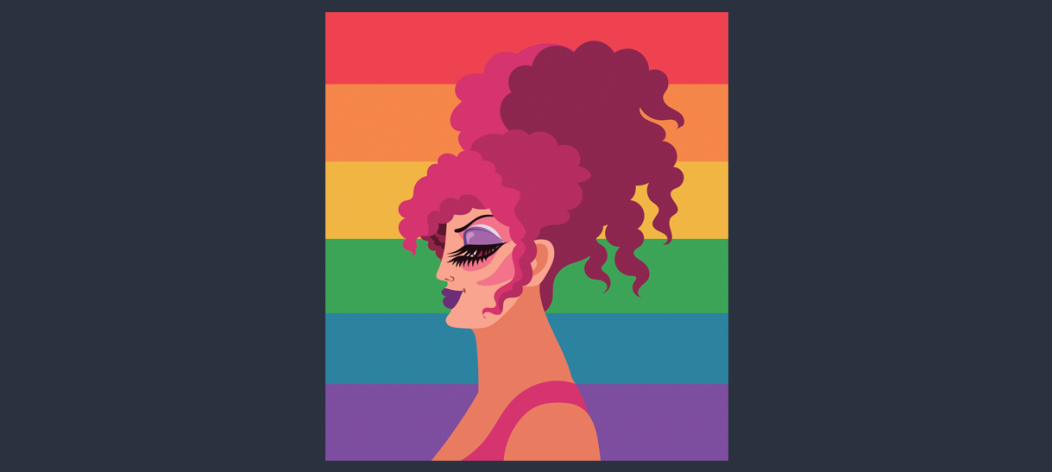

“Pick an identity – and stick with it!”
That’s constructive input from iconic, bar-raising drag queen RuPaul, during ‘commercial challenge’ week. This is the point in RuPaul’s Drag Race where competing queens attempt to solidify their brand identity. Basically – it’s the time to show and sell your content to the masses and hope that it sticks.
In fact, looking at the show in its entirety – for those who don’t know – contestants have over ten weeks of branding opportunity. Every line delivered, each lip-sync death-drop and even the type of material chosen for their runway look is a chance to showcase their individual brand.
Nowadays, drag culture is so embedded into LGBTQ+ marketing that nearly every pride campaign features the recognisable face of a Drag Race queen. If not there, you can find them on celebrity TV game shows, hosting Netflix documentaries and even dancing with the stars. That is, in part, due to the show’s rising popularity in the UK – but also due to how the essence of drag has streamed its way into widespread mainstream culture around the world.
But while this is a modern day example of the platform LGBTQ+ performance artists have to showcase their talents today, it’s a luxury born off the back of struggle.
The documentary Paris is Burning captured drag at its most daring in the 80s, at a time when public understanding was warped and attitudes were generally negative. It depicted the origins of today’s famous references. Even then, drag wasn’t new. It was, and continues to be, an expression that has evolved over many years, from the Ancient Greeks to Shakespeare’s plays. Today, it has become an art form, heralded as a driver in education as much as entertainment.
Portrayals of ‘crossdressing’ in mainstream film and TV began to highlight the nuances between transgender individuals and those experimenting with expressions of gender stereotypes. Popular comedians through the 90s experimented with drag, while growing public education about gender has brought focus to why drag is important to queer people. Historically a show with all cis-male contestants, Drag Race only first featured a trans man as a contestant in 2020, Gottmik. This allowed mainstream audiences to identify how being transgender and a drag queen are different, but that the drag space is inclusive of anybody.
Watch: Gottmik and other queens playing Snatch Game on RuPaul’s Drag Race
The show’s embodiment in pop culture has changed the way we speak, injecting pockets of LGBTQ+ slang into the mainstream – as well as shifted our general attitudes and behaviour online. Brands have capitalised on that movement, incorporating language like ‘yas!’ and ‘slay!’ when they address topics and audiences.
Awareness of drag has meant that new, newsworthy subcultures of content are created, spilling out into the mainstream. Expressions of self-love are the driving force, which has manifested in how brands are attaching themselves to famous drag queens, terminology and styling. Notably, Toyota embraced drag culture in their multi-platform ‘Go Your Own Way’ campaign. This showed different drag queens designing their own photoshoots, showcasing colourful car choices – and involved a mix of visual advertising, social media advertising and short documentary clips.
Watch: Liquorice Black in Toyota’s #GoYourOwnWay campaign video
For marketers, drag represents both new possibilities and a valuable lesson. How drag has managed to integrate with the masses, and how it has changed perceptions of queer culture, is something noteworthy for those hoping to stay aligned with the times. Marketers choosing to leverage queer talent for campaigns have the potential to be forward-thinking, creatively uncapped and culturally aware.
Just look at how queer family is a central theme through most narratives on television. For those who don’t know, a queer family is the community individuals become part of when living life as their true selves, sometimes due to separation or exilement from the family they were born into. The ‘drag family’, as a concept, is an extension of this – and an example of brand architecture done right. Within a family, or house, values and public-image is maintained and mirrored between its queens, signifying a tight brand identity and a core platform to build from.
While a lot of drag in the media relies on comedy – whether suggestive one-liners, or chaotic make-up choices – the days where drag’s main punchline for the mainstream was ‘a man in a wig’ are long gone. Today, we see first-hand documentaries detailing backstories of growing up queer, reality TV drag personalities educating fellow contestants on gender and drag celebrities driving discussions on social and cultural movements.
Like how marketing embraced queer people, and the media gave LGBTQ+ people a right to a platform, drag has flowed further than just existing in the mainstream – it’s driving creativity, education and fun to the masses.
For LGBTQ+ History Month, Octopus Group is sharing an insight into the history of LGTBQI+ in marketing and the media. Each week, we’ll cover a different topic to raise awareness and spotlight why this month is important for everyone.
To find out how you can get involved in LGBTQ+ awareness, check out a list of charities and community initiatives here.
Next week: Gen Z Power: Modernising the $3.9 trillion LGBTQ+ market
The latest (and most useful) B2B insight, delivered to your inbox.
Publicis Pro needs the contact information you provide to send you the latest B2B insights. You may unsubscribe from these communications at anytime.